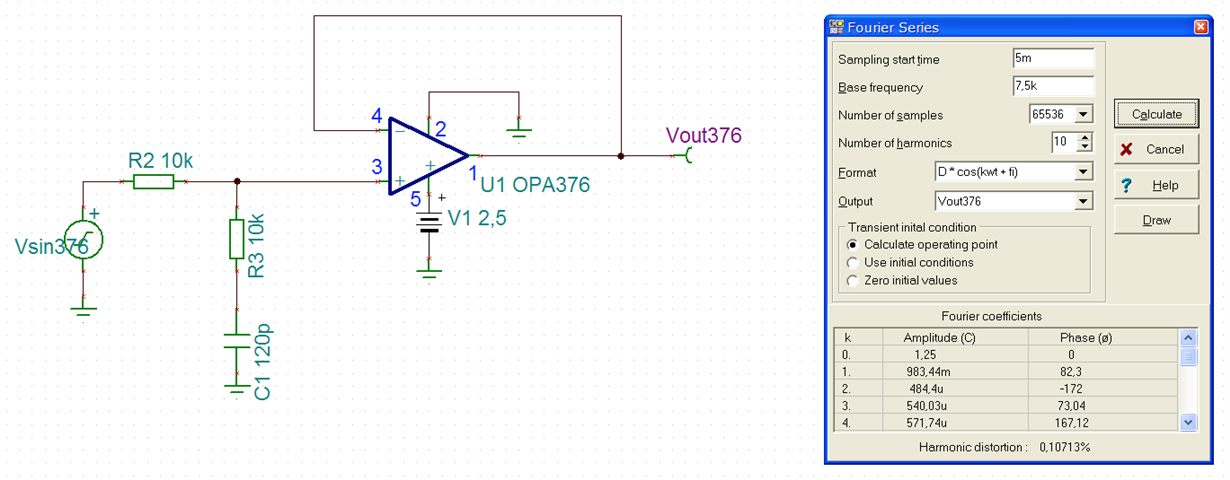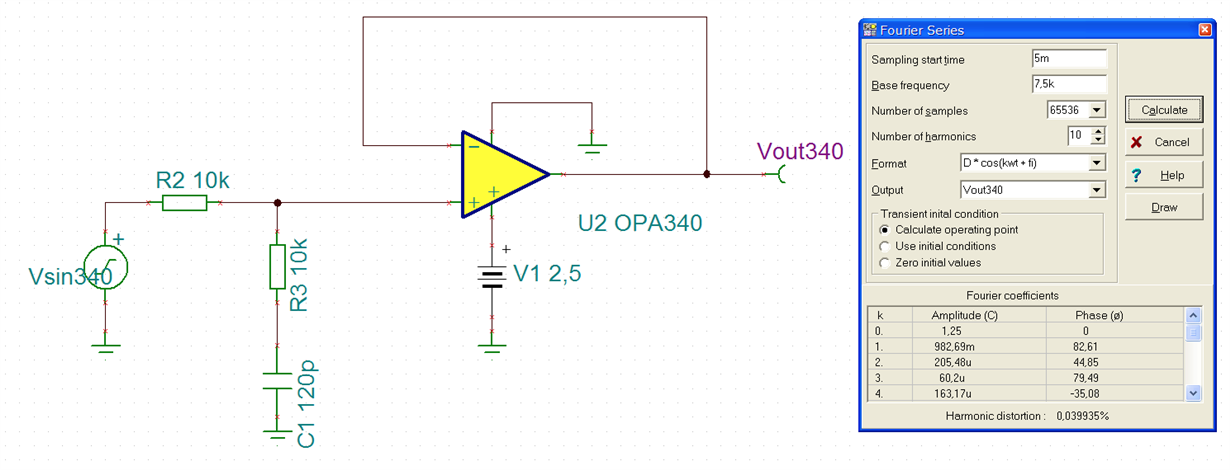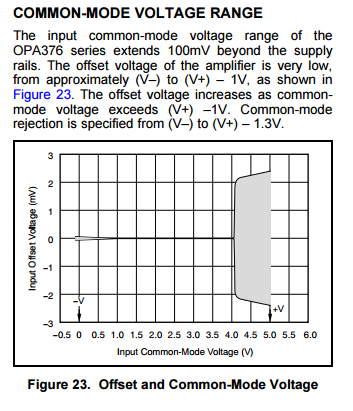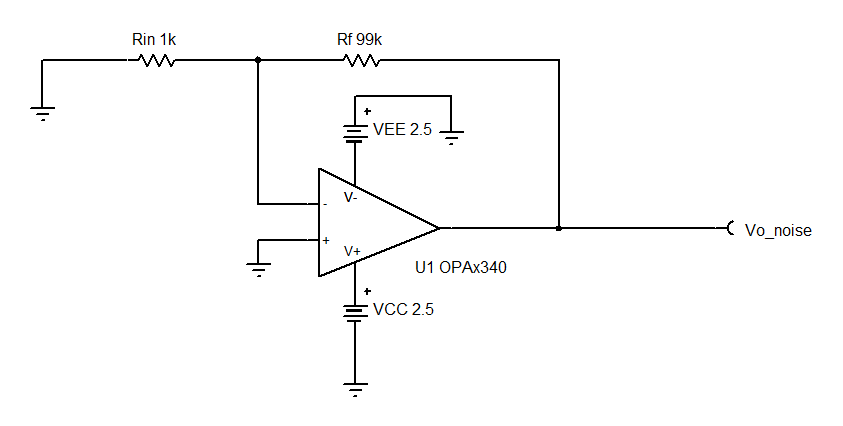Dear Sir,
In some of our applications we need to generate a sinusoidal voltage signal with better than -54dB of total harmonic distorsion, i.e. less than 0.2%.
I have been using for years the OPA340 as a sallen-key to buffer and filter the source signal generated by a D/A.
The D/A is implemented as (part of) and FPGA with weighted resistors, whose generation pattern is calculated in matlab in order to minimize the second harmonic. The matlab optimization procedure takes into account equivalent impedances of the FPGA outputs as well as the external components, included the salle-key filter.
This solution works perfectly, the FPGA produces no second harmonic and the OPA340 does the same. However we recently had to design the same circuit for a 2.5V instead of 3.3V, therefore we thought that OPA340 might have been at its limits. We then changed OPA340 with OPA376 (actually OPA2376 which is double), which shall even be better than OPA340 both in distorsion, noise and offset, as I read in the datasheet.
However, the very same circuit by changing the OPA only shows a relative high distorsion!
We also verified it by temporarily changing the power supply to 3.3V also for OPA376, so that the comparison was fare.
Besides, we also discovered the by removing the feedback capacitor of the sallen-key configuration, i.e. by leaving the OPA376 and OPA340 as buffer only, the OPA376 behaviour improved a little, while the OPA340 did not change.
We then made some simulation, whose screenshot I am attaching below. To my surprise, even the simulation actually shows that OPA376 is introducing distorsion more than the OPA340, despite having a lower THD value in the datasheet. Of course, in both cases the actual distorsion measurements are a little worse in reality, however this is quite normal in a simulation and anyway the simulated results are worse than the datashee values.
What I kindly ask you is:
1) can you please explain me this behaviour and the eventual pitfall in the circuit ?
2) can you please send us the schematic of the test you perform to measure the distorsion of OPA340 (THD=0.0007%) and OPA376 (THD=0.0002%) ?
3) in that circuit we are also using OPA376 as an amplifier elsewhere, due to the stated low noise; we are however reading A/D converterd voltages with quite more noise than we expcted; could you please send also the noise test schematics?
Thank you very much for you attention and support,
Roberto Padovani









